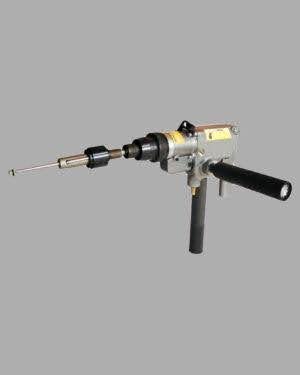Tube expansion is an essential procedure in industries where the performance of the heat transfer and sealing of connections is the most crucial. Effective expansion is important in shell-and-tube heat exchangers, condensers, and boilers, not only to achieve mechanical integrity but also to assure the best thermal performance. The present paper reviews the fundamental principles of tube expansion technology, including the performance of the power master tube expander and the flexibility of the tube expander machine nowadays.
1.Elements of tube expanding
Tube expanding involves the mechanical expansion of tubes to a tight interference fit in a tube sheet or header, by flaring or rolling. The method removes the spaces that may cause fluid leakage or efficiency of heat transfer. Here, the operators depend on the hydraulic or mechanical power to deform the outer surface of the tube and form a safe seal. It must have precise control of expansion pressure and speed to avoid rupture of the tube or under-expansion.
2.Innovative designs of tube expander machines
The development of tube expander machines has included the ability to adjust the rolling sets, use interchangeable mandrels and program pressure control. These advances allow one machine to process tubes of different diameters and wall thicknesses without requiring the manual change of tools. Compact form factors can save operational fatigue and better access to constrained working environments. Digital readouts and pressure sensors incorporated with the expansion process enable technicians to monitor the process in real time to ensure uniformity of results on large batches.
3.The power master tube expander operational benefits
High-torque and responsive hydraulic actuation characterize the power master tube expander and distinguish it from others. Its ergonomic design decreases the requirement of too much operator power, which allows it to last long periods during maintenance. The high-speed rate of expansion of the tool enhances productivity by reducing the idle period between successive tube operations. It also has quick-connect fittings and low hydraulic fluid requirements which make it simpler, and therefore less costly in the long run, to set up and maintain.
4.Consideration of maintenance and durability
Routine inspection and replacement of worn components is necessary to provide long-term reliability of tube expander equipment. O-rings, seals, and hydraulic hoses should be evaluated frequently to prevent leaks that may endanger performance. The modular machines can quickly interchange parts without having to halt the service. Lubrication of parts that move and follow the recommended service intervals by the manufacturer will not only prolong the life of the tool but also increase the safety of the operation.
5.Safety features in modern tube expander solutions
The Safety of the operator is improved using features like automatic pressure relief valves, guarding of moving parts and emergency-stop buttons. Lock-out is commonly provided on machines to eliminate accidental starting. Also, low-pressure start-up procedures enable technicians to ensure system integrity prior to full expansion force application. A combination of these provides additional protection against hydraulic fluid ejection or unplanned mandrel release.
6.Industrial usage efficiency
The use of a high-performance tube expander machine is associated with high levels of efficiency in industrial maintenance and fabrication. The reduced cycle time allows facilities to undertake regular exchanger overhauls within a shorter number of shifts saving labor costs. Improved seal integrity reduces the secondary leak-testing processes, reducing plant start-up timetables. Also, the uniform expansion profiles between thousands of tubes ensure consistent heat transfer rates and lengthen the service life of prone equipment.
7.Tube expander equipment selection criteria
The selection of the appropriate expansion tool depends on the consideration of factors of the material of the tube, the range of diameters, and the thickness of the wall. Plants that have mixed heat exchanger fleets can prefer a versatile tube expander machine that can accommodate different sizes with limited tooling changes. The ergonomic factors that influence operator comfort during long-duration use include weight and handle design. Finally, local service support and spare parts may become a determinant of long-term investment value.
Conclusion
Tube expansion processes can be very sensitive to heat-transfer equipment and as such, the optimization of such processes is needed to maintain integrity and efficiency. Using innovative technology such as a power master tube expander and specially designed tube expander machine, maintenance crews can offer reliable seals, and faster project schedules and maintain the highest standards of safety. With the increase in industrial needs, the choice of expansion technology will remain a major issue in maintaining a seamless plant opera







